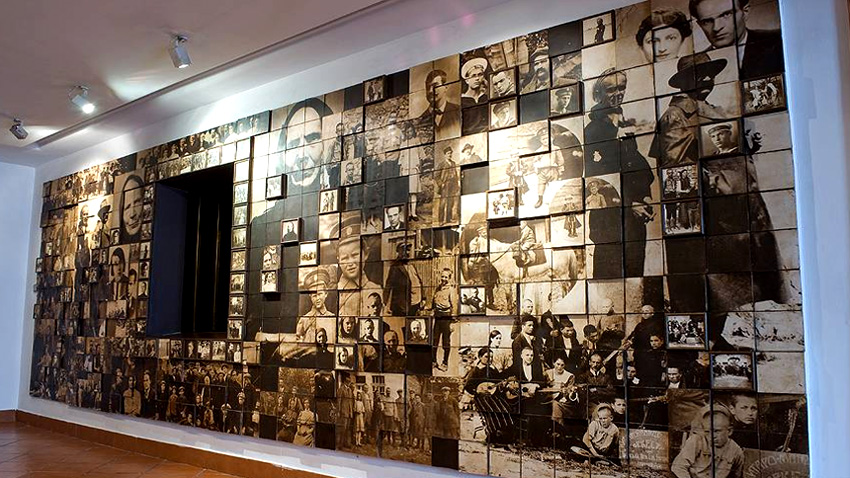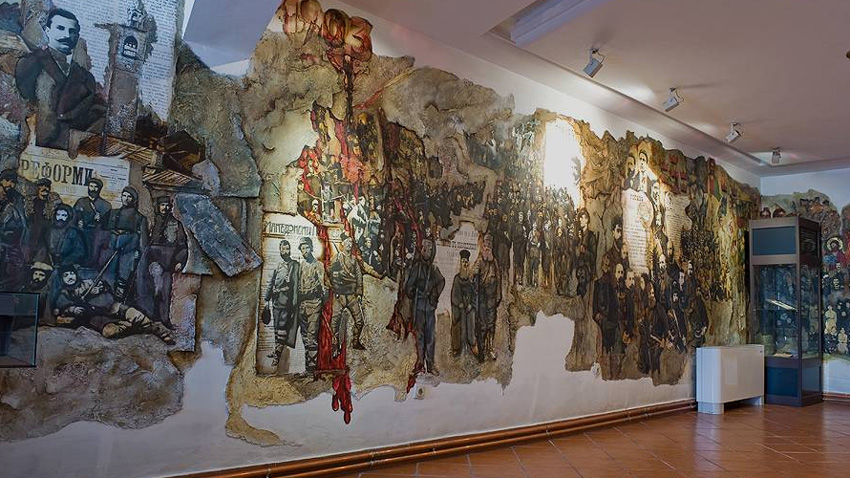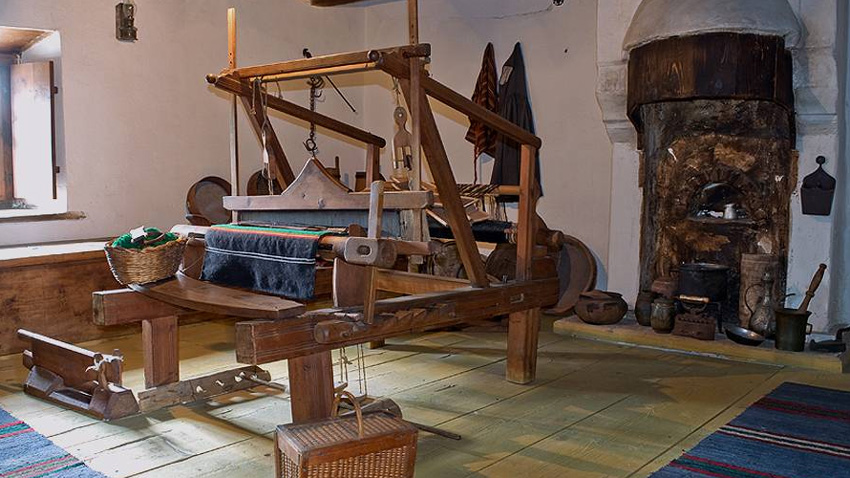In recent years the famous winter resort of Bansko in Mount Pirin has also been developing as a summer tourist location. There are fascinating museums here that are open all the year round, revealing different aspects of the town’s history and culture.
“I can think of no other town or village in Bulgaria that has given the country so many prominent figures. In the 18th century - Paisius of Hilendar, in the 19th century – Neofit of Rila and in the 20th century – renowned Bulgarian poet Nikola Vaptsarov,” says Svetla Baryakova, Director of the museums in Bansko. The first exposition in the town opened doors in 1952, she explains, or ten years after Nikola Vaptsarov was executed. To mark this, part of his archives were put on display in his home in their original surroundings. Photographs, facsimiles and different household objects illustrate the poet’s childhood years; documents and memoirs attest to his participation in the anti-fascist movement, for which he was arrested, sentenced and executed at the age of 33. The museum displays the first edition of Nikola Vaptsarov’s Motor Songs, the only collection of poems published in his lifetime. The building is in the town’s centre, part of the design of the town square. Right opposite is Bansko’s town hall, next to it rises the biggest cultural centre in Bansko – the chitalishte (culture community club) named after Nikola Vaptsarov.

Here is Mrs. Svetla Baryakova with more:
“Since the museum opened doors there have been several expositions. The latest one is by film director Vulo Radev – he is the author of the project and helped make it happen. All modern tools are used to illustrate the life and work of Nikola Vaptsarov and his bond with Bansko. People are very moved when they see the exposition; obviously it touches their heartstrings. It is usually the first museum tourists enter – there are many young people from Bulgaria coming here but also from abroad. It is one of Bansko’s symbols and gets over 45,000 visits a year. More than three and a half million people have seen it since it was set up.”

Even a random visitor is bound to feel the reverence and the creative spirit Vulo Radev has imbued the exposition with. Most of the objects included in it were provided by Granny Elena, as everyone called Vaptsarov’s mother. Intelligent and well educated for a woman of her time (she graduated the American College in Samokov) she was a veritable embodiment of stoicism and the power of the spirit. She brought her children up with much love but also in strict discipline. From a very early age she would read them to sleep with Hoffman’s tales and would encourage them to read and to develop their gifts. When her son Nikola was admitted to the Naval Academy in Varna and was soon to be absent from home for a long time, she gave him a notebook on which she wrote: Be strong, be a man. Let nothing worldly undermine your character, which I believe is good. Your mother, Elena Vaptsarova, 27 July 1926.”
“Granny Elena took part in the creation of the museum,” says Mrs. Baryakova. “When the reconstruction of the house started she was provided a separate building to live in. She worked here till her death. His sister Rayna was a guide here for many years, almost to her dying day.”

Several of the rooms show how the family once lived – the hand-woven fabrics, the beautifully arranged guest room, the room they would get together in the evening. There is a special place in the museum for the poet’s childhood memories and the folk songs he loved. The photographs and captions underneath bring to life a cheerful friend of Granny Elena’s who had a beautiful voice and loved to sing Bansko songs while Nikola sat and listened enthralled. Here visitors can see the mandolin he played in the school orchestra. One of the people with a profound influence on him was poet Peyo Yavorov, a close friend of his father’s. Films in several languages tell the story of Nikola Vaptsarov’s brief life. Another exhibit here is the World Peace Council award bestowed on Nikola Vaptsarov posthumously in 1952.
English: Milena Daynova
Photos: bulgariatravel.org
One of Bulgaria’s emblematic medieval fortresses rises close to Mezek village, six kilometers from Svilengrad and just one from the border with Greece. It was built at the end of the 11 th and the beginning of the 12 th century, probably during the..
There is a sacred place in the Balkan Mountain Range beloved by all Bulgarians. We are talking about the Shipka peak where the National Monument of Freedom was built. One of the most popular military monuments was built in honor of the Russian..
Number 25 in the list of the 100 National Tourist Sites in Bulgaria is the St. John the Forerunner Orthodox monastery. Its ruins are situated on beautiful heights above the Arda River which crosses the town of Kardzhali. The..

+359 2 9336 661
